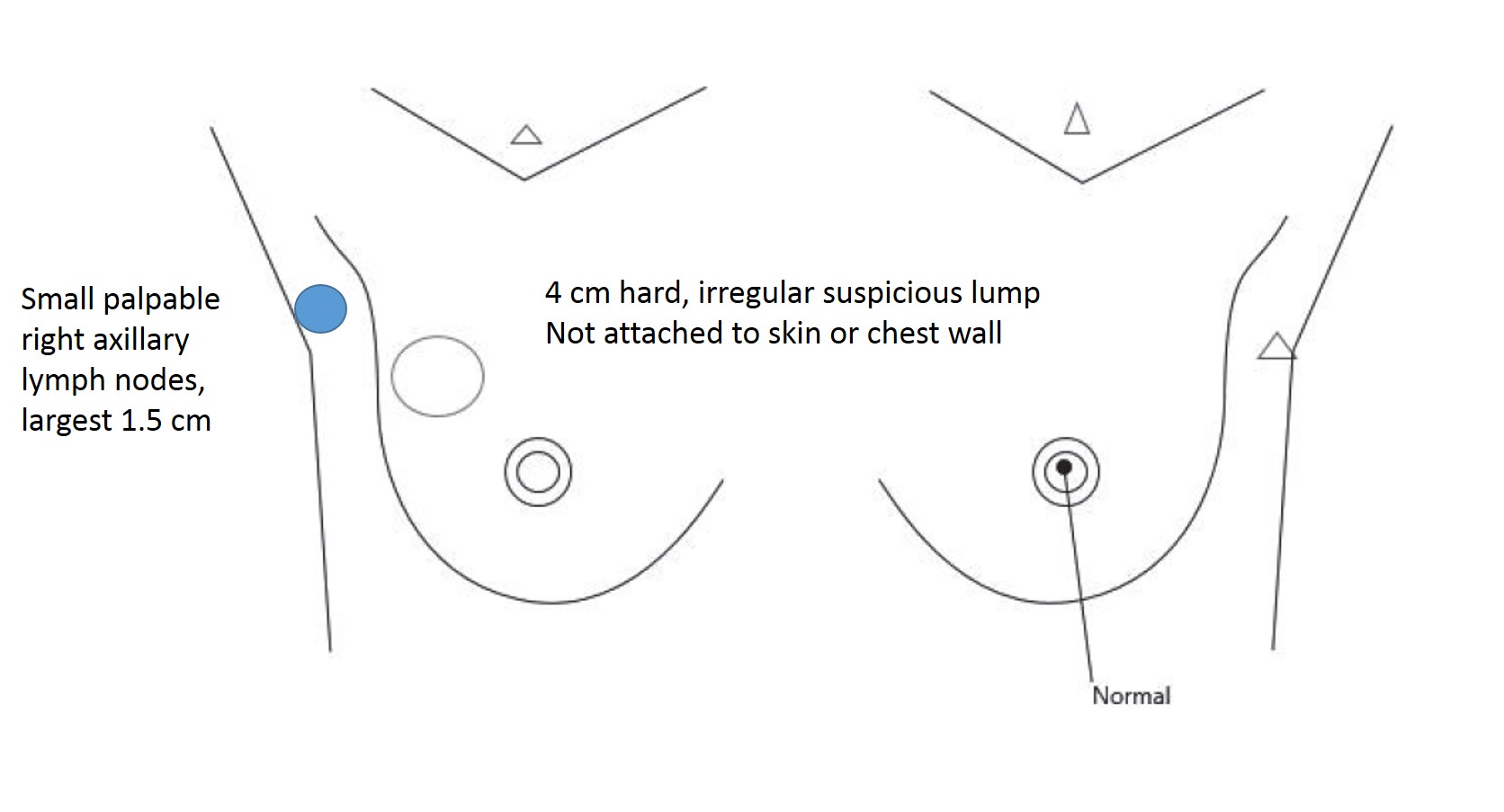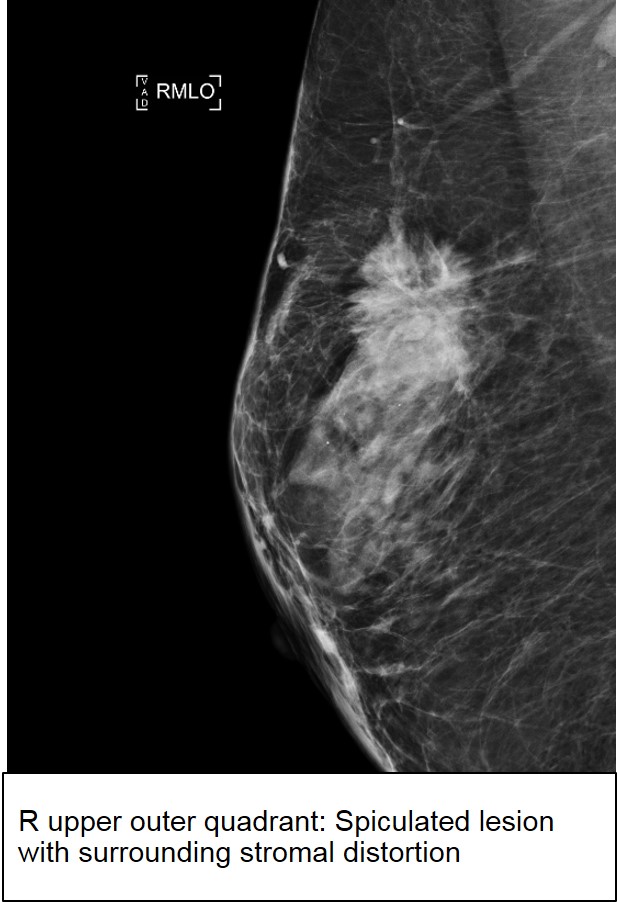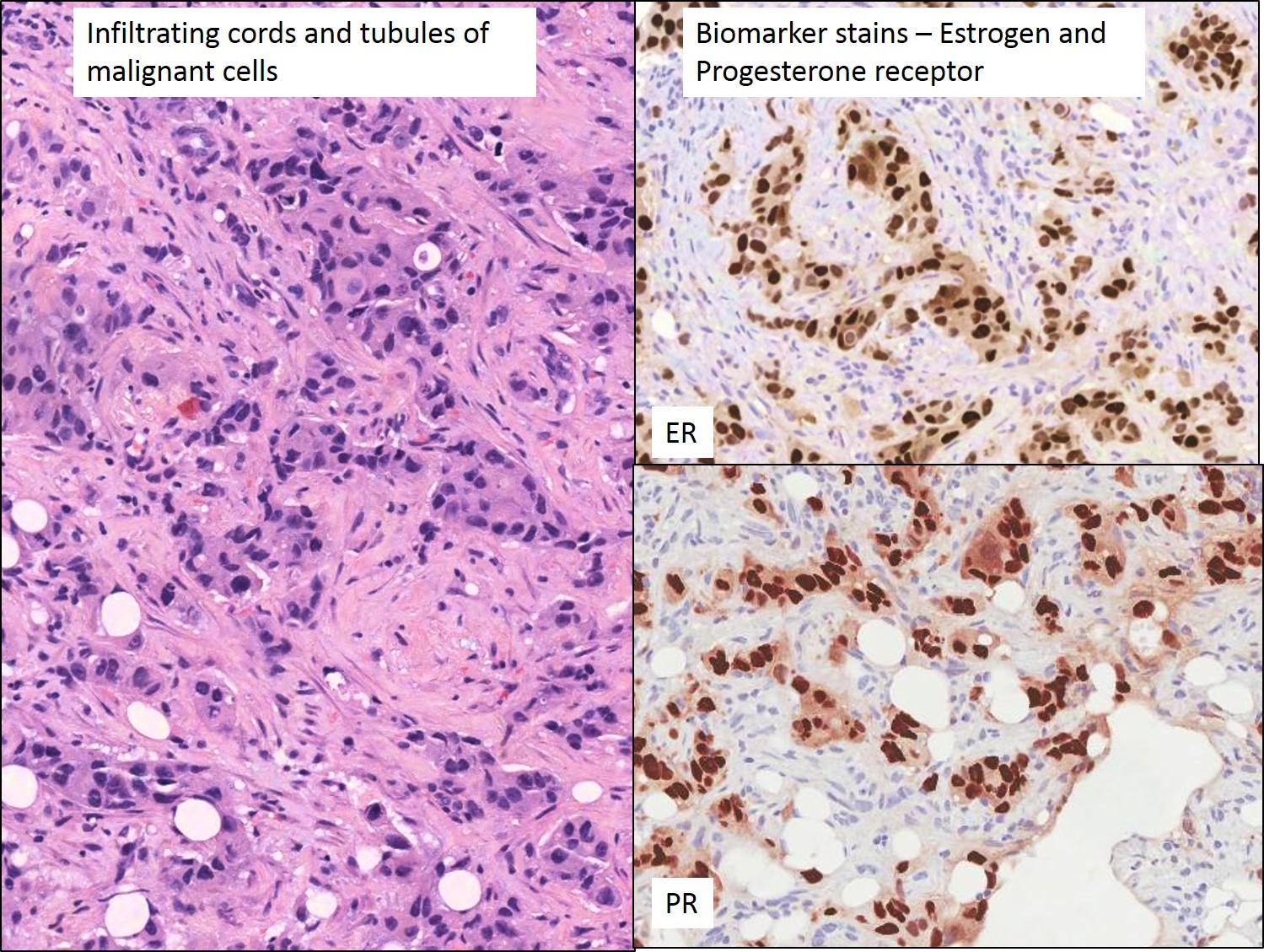See how a team of doctors manages a patient with a breast lump. At each step, think about what your role would be if you were the GP, or the medical officer in the specialist clinic.
I. Clinical History
Mdm Suppiah is a 63 year old lady with a breast lump. Her family brings her to the polyclinic.
1. Question: What would you do if you were the GP or polyclinic doctor seeing her for the first time?
Here are some options to consider, which would you choose?
- Order a mammogram and tell her to come back in 2 weeks.
- Refer her directly to the breast clinic in a restructured hospital for specialist assessment.
- Take a detailed history and examine her clinically before deciding what to do next.
Mdm Suppiah is seen at the Breast Clinic in the National University Hospital one week later.
2. Question: What is your clinical diagnosis?
3. Question: What would you do to confirm the diagnosis?
4. Question: The diagnosis is made. What is the needs to be done next?
II. In the Pathology Lab
1. Handling the Breast specimen. After surgery, the excised breast specimen (mastectomy) arrives in the Pathology Lab. The pathologist examines it and samples selected areas - this is known as Grossing or Trimming. Here is the pathologist in action.
If you can't play the video, watch it here on Youtube: https://youtu.be/0UbVpZSAEG4
2. Microscopic examination. After Grossing the specimen, the tissue is processed into microscopic slides. Here is how the pathologist then evaluates the slides to obtain important Diagnostic and Prognostic information.
If you can't play the video, watch it here on YouTube: https://youtu.be/iM0wOdCYe3E
Here is a walk-through of how pathologists perform GRADING of breast carcinoma. This is from a different case, where the overall grade is 2.
iV. Follow-up
Mdm Suppiah's pathology and intraoperative findings would be again presented at the multidisciplinary Breast Team meeting, and the decision made on the post-operative management, follow-up and surveillance.
Acknowledgements: The videos feature Dr Wang Shi, Dr Wu Bing Cheng, and Dr Nga Min En, and are created by Dr Noel Chia (Department of Pathology, National University Hospital, Singapore)





